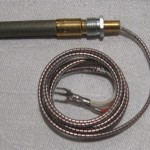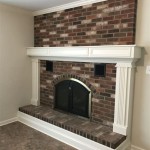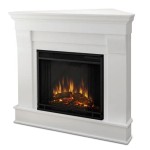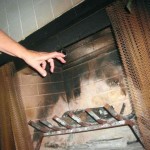How To Clean A Wood Fireplace Chimney
Maintaining a wood-burning fireplace involves more than just enjoying its warmth and ambiance. Regular chimney cleaning is crucial for preventing dangerous chimney fires and ensuring efficient operation. Creosote, a byproduct of burning wood, accumulates inside the chimney and is highly flammable. A buildup of creosote can significantly increase the risk of a chimney fire, which can lead to extensive property damage and endanger lives. Cleaning a wood fireplace chimney is a task that homeowners can undertake themselves, provided they have the necessary tools, understand the safety precautions, and follow a detailed procedure.
Before beginning any chimney cleaning process, safety must be the primary concern. Always wear appropriate protective gear, including safety glasses, a dust mask or respirator, and gloves. This protects against dust, soot, and potential irritants. It is also advisable to wear old clothes that can be easily washed or discarded after the cleaning process. Ensure that the fireplace is cold and has not been used for at least 24 hours prior to starting. This minimizes the risk of burns from residual heat.
Choosing the right time to clean the chimney is also important. Ideally, chimney cleaning should be performed at least once a year, typically before the start of the heating season. If the fireplace is used frequently, more frequent cleaning may be necessary. Signs that indicate a need for cleaning include visible creosote buildup inside the chimney, reduced draft efficiency, and a smoky smell when the fireplace is in use. Consulting with a professional chimney sweep can help determine the frequency of cleaning required based on individual usage patterns.
Gathering the Necessary Tools and Equipment
The process of cleaning a wood fireplace chimney requires specific tools designed for this purpose. These tools are essential for effectively removing creosote and other debris from the chimney flue. The core item is a chimney brush, which should be the correct size and shape for the specific chimney. Chimney brushes come in various materials, including wire and poly, and are available in round, square, and rectangular shapes to accommodate different flue types. Measuring the chimney flue beforehand will ensure that the correct brush size is selected.
A set of chimney cleaning rods is also necessary. These rods are designed to be connected to the chimney brush, allowing it to be pushed up or down the chimney flue. The length of the rods should be sufficient to reach the top of the chimney. Flexible fiberglass rods are generally preferred as they can navigate bends and offsets in the chimney flue more easily than rigid metal rods.
Other essential tools include a drop cloth or plastic sheeting to protect the fireplace area from soot and debris, a vacuum cleaner with a HEPA filter to efficiently remove soot and dust, duct tape to seal off the fireplace opening, a small shovel or trowel to collect debris from the smoke shelf, a flashlight to inspect the chimney interior, and a wire brush to scrub the smoke shelf. Having all these tools readily available will streamline the cleaning process and ensure thorough removal of creosote and other buildup.
Preparing the Fireplace Area
Before starting the actual cleaning, properly preparing the fireplace area is crucial to contain the mess and prevent soot from spreading throughout the house. Begin by removing all flammable materials from the vicinity of the fireplace, including rugs, furniture, and curtains. Spread a large drop cloth or plastic sheeting around the fireplace opening to protect the floor and surrounding surfaces.
Seal off the fireplace opening as completely as possible using duct tape and plastic sheeting. This prevents soot and debris from escaping into the room during the cleaning process. Leave a small opening just large enough to insert the chimney brush and rods. Secure the plastic sheeting tightly to the fireplace surround to create a barrier. Additionally, close any nearby doors or windows to minimize the spread of dust and soot particles.
Once the fireplace area is properly protected, it is time to remove any loose debris from the firebox. Use a small shovel or trowel to scoop out ashes and soot from the bottom of the fireplace. Dispose of the ashes in a metal container with a tight-fitting lid. Avoid using a regular vacuum cleaner to remove ashes, as the fine particles can damage the motor and filter. Instead, use a shop vacuum with a HEPA filter specifically designed for ash removal. The smoke shelf, located above the firebox, should also be cleaned using a wire brush to remove any accumulated creosote and debris.
Cleaning the Chimney Flue
With the area prepared and the tools assembled, the actual cleaning of the chimney flue can begin. Start by inserting the chimney brush into the flue through the opening in the sealed fireplace. Connect the first chimney rod to the brush and begin pushing it up the chimney. Use a firm, consistent motion to scrub the interior walls of the flue. Rotate the brush as it moves to ensure complete coverage.
As the brush travels up the chimney, continue adding rods as needed to reach the top. Overlap each stroke to thoroughly clean the entire flue surface. Pay particular attention to areas where creosote buildup is heavy, as these areas may require more aggressive scrubbing. Once the brush reaches the top of the chimney, pull it back down, repeating the scrubbing motion on the way down.
After completing the initial scrubbing, remove the brush and rods from the chimney. Use a flashlight to inspect the interior of the flue and verify that the creosote has been effectively removed. If necessary, repeat the cleaning process to address any remaining buildup. Once satisfied with the cleanliness of the flue, carefully remove the plastic sheeting and duct tape from the fireplace opening. Use the shop vacuum with a HEPA filter to thoroughly clean the fireplace area, removing any remaining soot and debris. Finally, dispose of the used plastic sheeting and cleaning materials properly.

How To Clean A Chimney Sweep

How To Clean A Chimney The Home Depot

Clean And Inspect Your Chimney To Remove Sooty Deposits

How To Clean A Fireplace

How To Clean A Fireplace Like Pro Housekeepers

How To Clean Your Own Chimney

How To Clean Chimney Wood Stove Pipes

Imperial Creosote Sweeping Log In The Fireplace Maintenance Department At Com

Wood Fireplace Cleaning Keeping Your Insert Clean

Cleaning Maintaining Your Wood Stove
Related Posts








